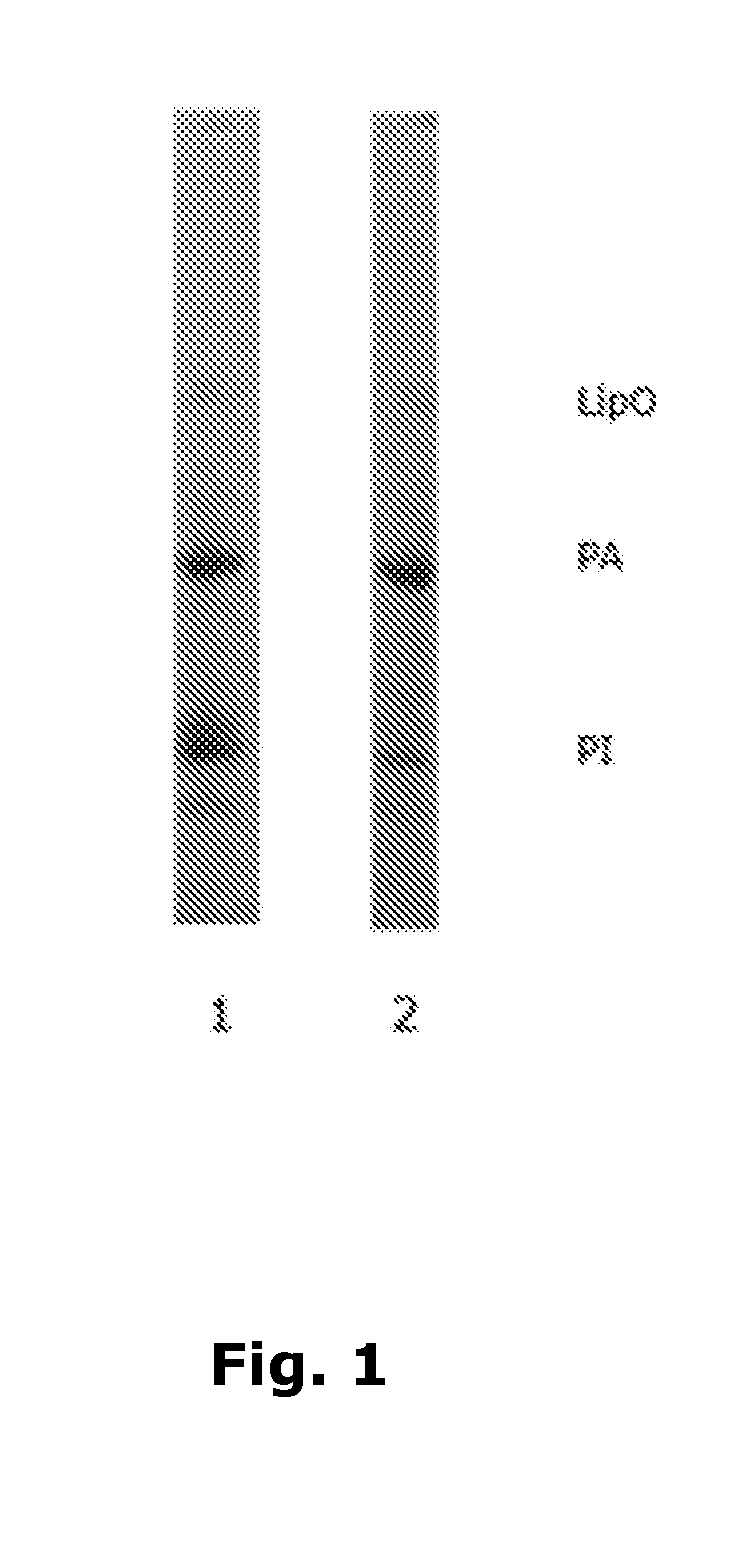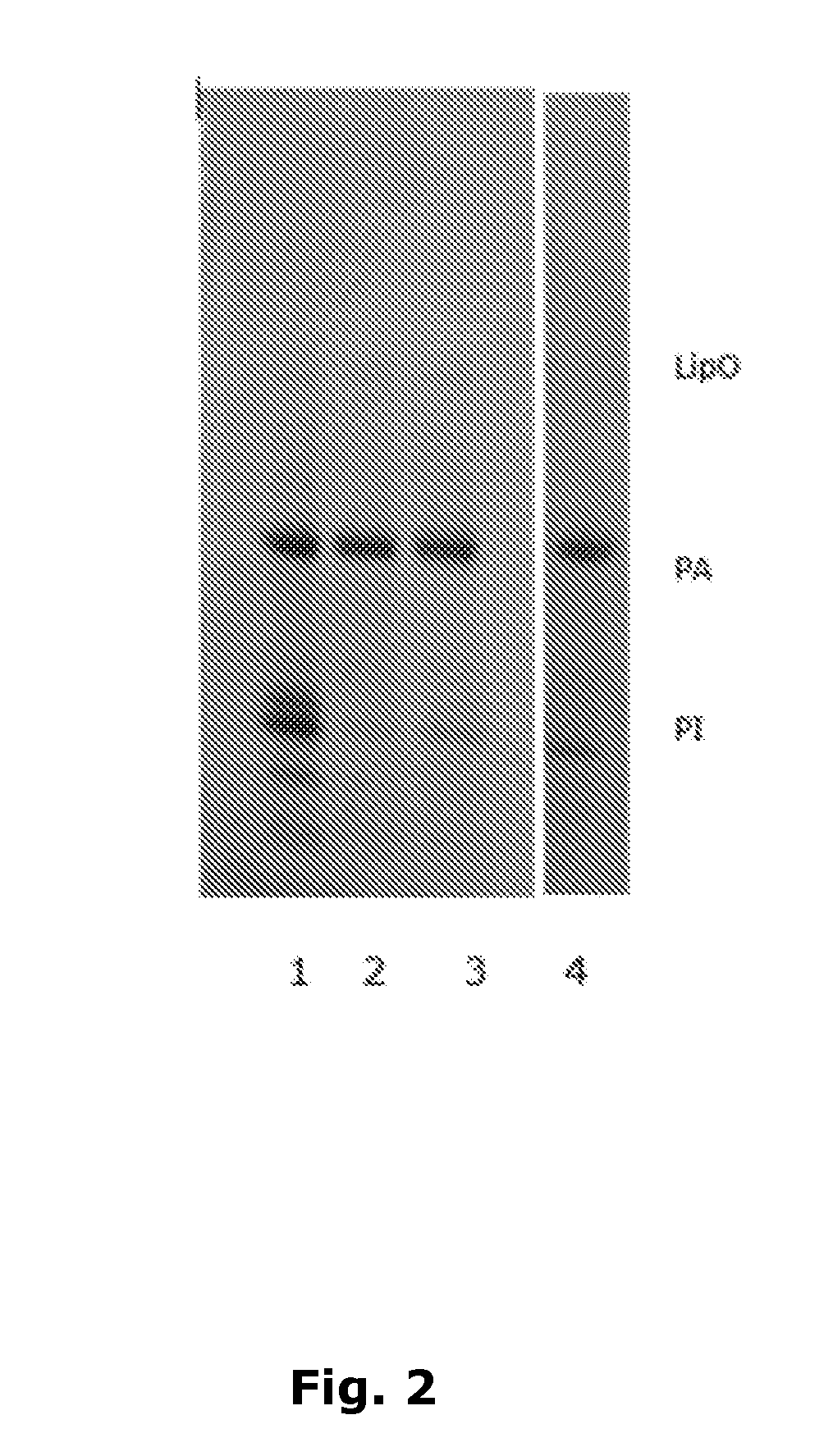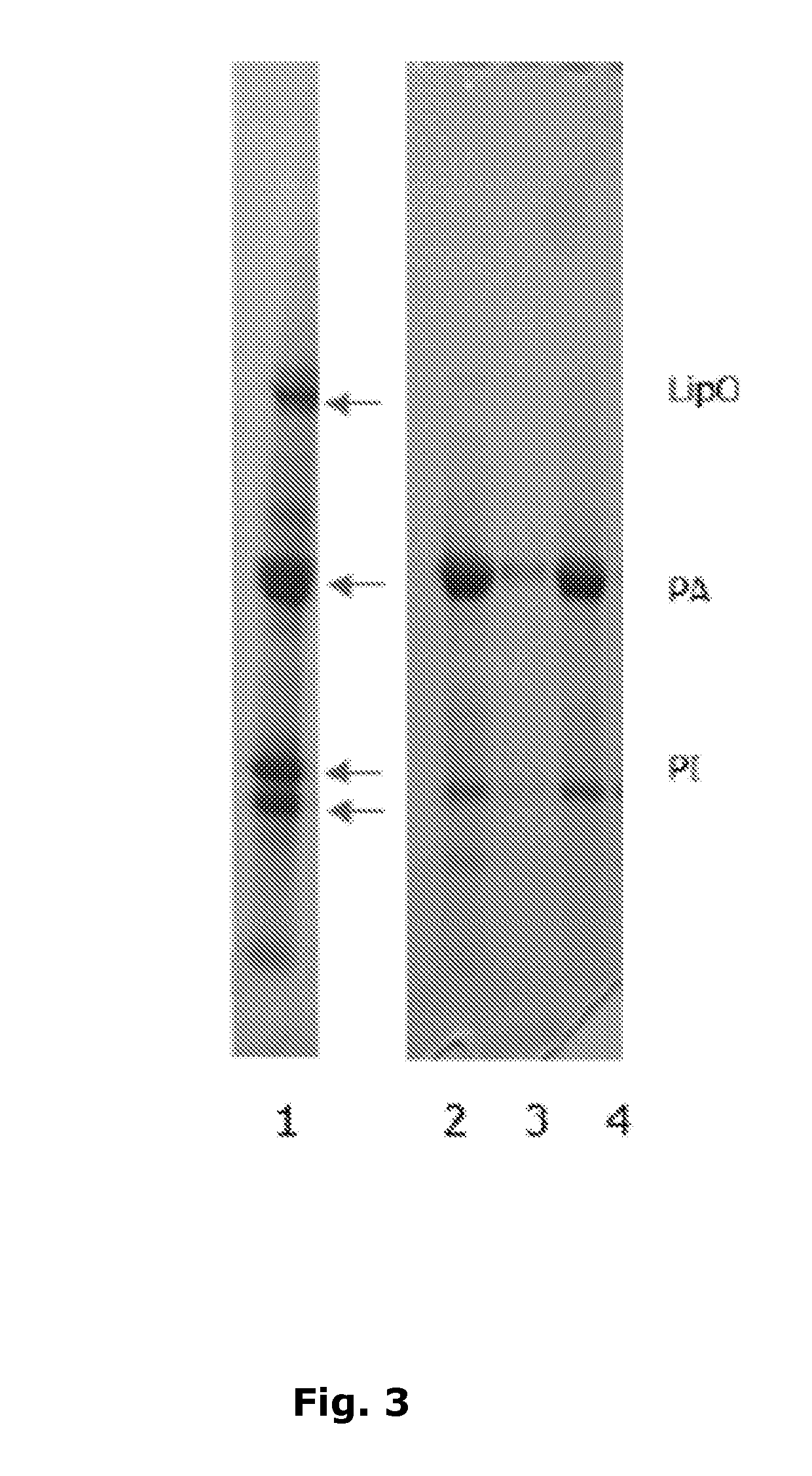Methods for isolating compounds
a technology of isolating compounds and compounds, which is applied in the direction of peptides, membranes, peptide sources, etc., can solve the problems of phenolic compounds that are not desired in nutrition and nutraceutical applications, also contain compounds that are undesirable or even poisonous, and can cause toxicity,
- Summary
- Abstract
- Description
- Claims
- Application Information
AI Technical Summary
Benefits of technology
Problems solved by technology
Method used
Image
Examples
example 1
on of a Soluble Starch Polymer Coupled with a Mixed Mode Ligand (4-Aminosalicylic Acid)
[0551]Soluble potato starch Sigma Aldrich, USA (cat.no.: S2004) is activated with AGE, bromine treated and coupled with 4-aminosalicylic acid using the following procedure: Activation with AGE: 25 g soluble starch is mixed thoroughly with 50 ml of water followed by addition of 25 ml AGE and 4 ml 30% sodium hydroxide. The solution is then incubated for 7.5 hours at 65-70° C. followed by addition of acetic acid to neutralize the hydroxide and stop the reaction. The resulting solution is dialyzed in a dialysis tube for two days against water to produce a solution free of remaining low molecular weight reactants while the allylated starch stay in the dialysis bag. The allylated starch polymer is then treated with bromine water (1% solution) until a red-brown color remains indicating that substantially all allyl groups have been brominated. The bromine treated polymer is coupled with 4-aminosalicylic a...
example 2
on of Adsorbent Beads Coupled with a Mixed Mode Ligand (4-Aminosalicylic Acid)
[0552]6% spherical agarose beads (50-150 μm diameter) from ABT, Spain (cat.no.: A-1060M-X) are crosslinked with 1,4-butanediol diglycidyl ether (BDDGE) from Sigma Aldrich, USA (cat.no.: 124192, 60%) by mixing 450 ml agarose beads with 60 ml BDDGE and 27 ml 50 wt % sodium hydroxide for 18 hours at ambient temperature followed by washing with 10 L water on a sintered glass funnel.
[0553]The cross-linked beads are then activated with allyl glycidyl ether (AGE) Sigma Aldrich, USA (cat.no.: 32608) by mixing 200 ml cross-linked beads with 80 ml AGE and 20 ml 30 wt % sodium hydroxide on a temperature controlled water bath (60-65° C.) for three hours. The activated beads are then washed thoroughly with 5 L water on a sintered glass filter. The cross linked and activated beads are the suspended in 200 ml water and added bromine water (1% solution) while mixing until a red-brown color remains in the mixture indicatin...
example 3
ting the PI Fraction from Potato Juice with a Ligand Derivatised Starch Polymer
[0556]4 ml of potato juice produced according to materials and methods (true protein concentration: 8 g / L) (test solution 1) is mixed with 1 ml of 4-aminosalicylic acid starch polymer (prepared according to example 1). The pH in the solution is adjusted to pH 5.5 with 1 M hydrochloric acid under mixing at ambient temperature for 10 minutes. The precipitated solution is then centrifuged for 5 min at 1340 g and the supernatant is collected (test solution 2).
[0557]The test solutions are analyzed by SDS-PAGE as illustrated in FIG. 1. The PPO activity of the test solutions is further determined according to materials and methods and shown in table 1.
[0558]The SDS-PAGE illustrates that the major part of PI is precipitated with the starch polymer modified with 4-aminosalicylic acid resulting in a PA enriched juice, see lane 2 which has a rather faint PI band compared to non-treated juice of lane 1.
Table 1 showin...
PUM
| Property | Measurement | Unit |
|---|---|---|
| Temperature | aaaaa | aaaaa |
| Fraction | aaaaa | aaaaa |
| Fraction | aaaaa | aaaaa |
Abstract
Description
Claims
Application Information
 Login to View More
Login to View More - R&D
- Intellectual Property
- Life Sciences
- Materials
- Tech Scout
- Unparalleled Data Quality
- Higher Quality Content
- 60% Fewer Hallucinations
Browse by: Latest US Patents, China's latest patents, Technical Efficacy Thesaurus, Application Domain, Technology Topic, Popular Technical Reports.
© 2025 PatSnap. All rights reserved.Legal|Privacy policy|Modern Slavery Act Transparency Statement|Sitemap|About US| Contact US: help@patsnap.com



